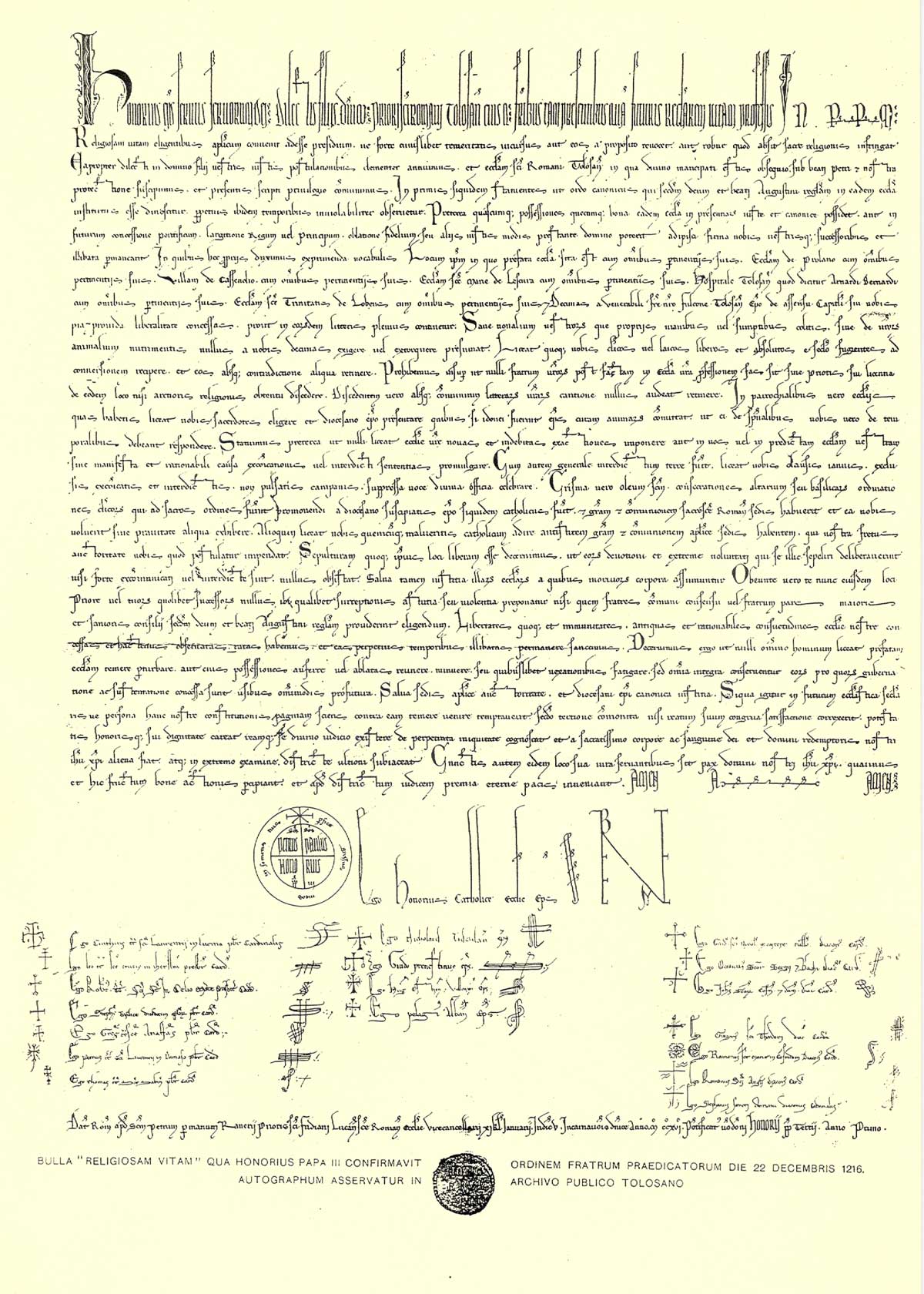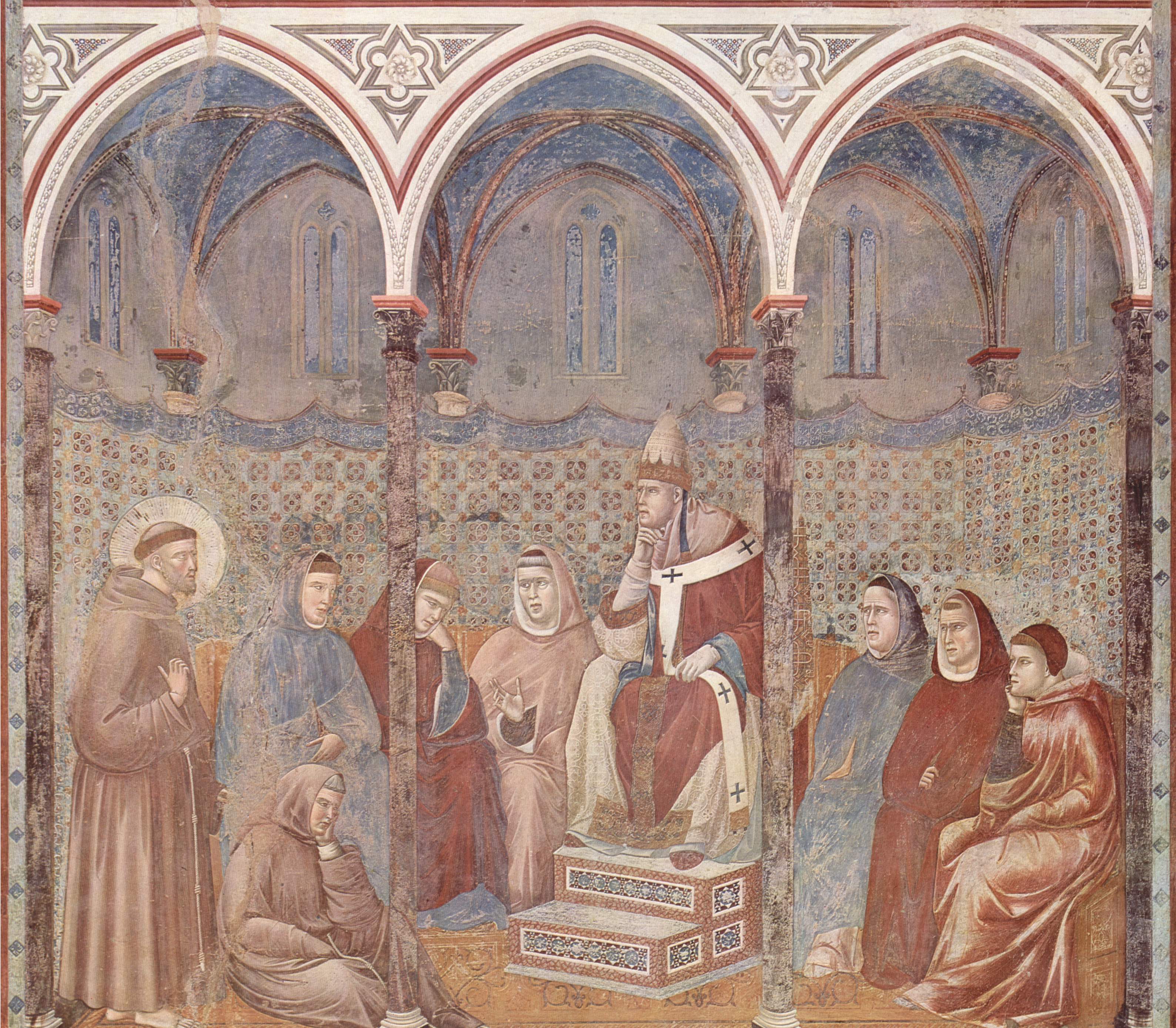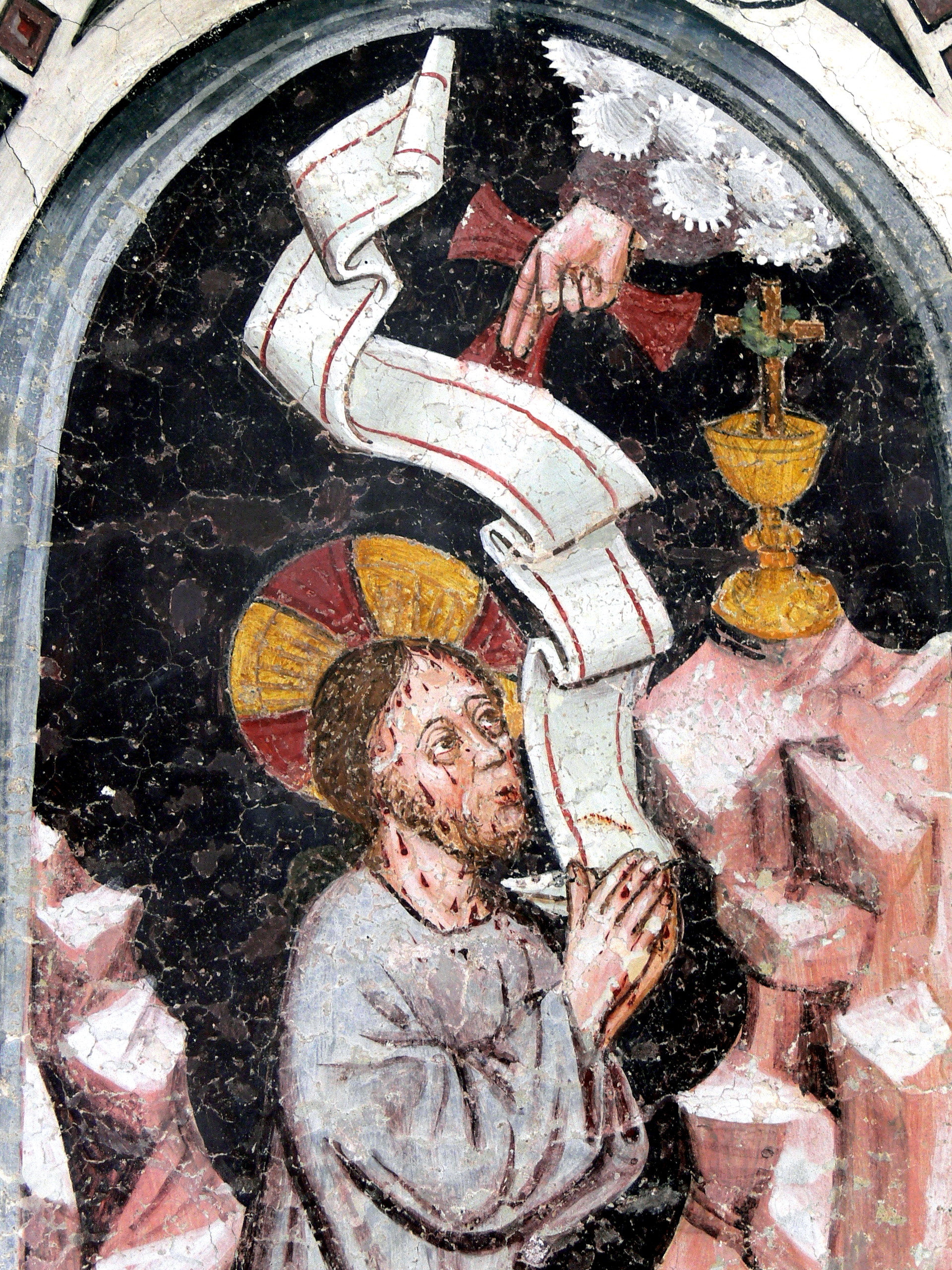|
Pontifical University Of Saint Thomas Aquinas
The Pontifical University of Saint Thomas Aquinas (PUST), also known as the ''Angelicum'' or ''Collegio Angelico'' (in honor of its patron, the ''Doctor Angelicus'' Thomas Aquinas), is a pontifical university located in the historic center of Rome, Italy. The ''Angelicum'' is administered by the Dominican Order and is the order's central locus of Thomistic theology and philosophy. The ''Angelicum'' is coeducational and offers both undergraduate and graduate degrees in theology, philosophy, canon law, and social sciences, as well as certificates and diplomas in related areas. Courses are offered in Italian and some in English. The ''Angelicum'' is staffed by clergy and laity and serves both religious and lay students from around the world. History The ''Angelicum'' has its roots in the Dominican mission to study and to teach truth. This mission is reflected in the order's motto, "''Veritas''". The distinctively pedagogical character of the Dominican apostolate as intended by ... [...More Info...] [...Related Items...] OR: [Wikipedia] [Google] [Baidu] |
Latin
Latin ( or ) is a classical language belonging to the Italic languages, Italic branch of the Indo-European languages. Latin was originally spoken by the Latins (Italic tribe), Latins in Latium (now known as Lazio), the lower Tiber area around Rome, Italy. Through the expansion of the Roman Republic, it became the dominant language in the Italian Peninsula and subsequently throughout the Roman Empire. It has greatly influenced many languages, Latin influence in English, including English, having contributed List of Latin words with English derivatives, many words to the English lexicon, particularly after the Christianity in Anglo-Saxon England, Christianization of the Anglo-Saxons and the Norman Conquest. Latin Root (linguistics), roots appear frequently in the technical vocabulary used by fields such as theology, List of Latin and Greek words commonly used in systematic names, the sciences, List of medical roots, suffixes and prefixes, medicine, and List of Latin legal terms ... [...More Info...] [...Related Items...] OR: [Wikipedia] [Google] [Baidu] |
Veritas
In Roman mythology, Veritas (), meaning Truth, is the Goddess of Truth, a daughter of Saturn (mythology), Saturn (called Cronus by the Greeks, the Titan (mythology), Titan of Time, perhaps first by Plutarch) and the mother of Virtus (deity), Virtus. She is also sometimes considered the daughter of Jupiter (mythology), Jupiter (called Zeus by the Greeks), or a creation of Prometheus. The elusive goddess is said to have hidden in the bottom of a holy well. She is depicted both as a virgin dressed in white and as the "naked truth" (''nuda veritas'') holding a hand mirror. The eqivalent Greek goddess is Aletheia (Ancient Greek language, Ancient Greek: ). ''Veritas'' was the Roman virtue of Honesty, truthfulness, which was considered one of the main virtues any good Roman should possess. The German philosopher Martin Heidegger argues that the truth represented by ''aletheia'' (which essentially means "unconcealment") is different from that represented by ''veritas'', which is linked ... [...More Info...] [...Related Items...] OR: [Wikipedia] [Google] [Baidu] |
Priory
A priory is a monastery of men or women under religious vows that is headed by a prior or prioress. They were created by the Catholic Church. Priories may be monastic houses of monks or nuns (such as the Benedictines, the Cistercians, or the Charterhouses). Houses of canons & canonesses regular also use this term, the alternative being "canonry". Mendicant houses, of friars, nuns, or tertiary sisters (such as the Friars Preachers, Augustinian Hermits, and Carmelites) also exclusively use this term. In pre-Reformation England, if an abbey church was raised to cathedral status, the abbey became a cathedral priory. The bishop, in effect, took the place of the abbot, and the monastery itself was headed by a prior. History Priories first came to existence as subsidiaries to the Abbey of Cluny. Many new houses were formed that were all subservient to the abbey of Cluny and called Priories. As such, the priory came to represent the Benedictine ideals espoused by the ... [...More Info...] [...Related Items...] OR: [Wikipedia] [Google] [Baidu] |
Episcopal See
An episcopal see is the area of a bishop's ecclesiastical jurisdiction. Phrases concerning actions occurring within or outside an episcopal see are indicative of the geographical significance of the term, making it synonymous with ''diocese''. The word ''see'' is derived from Latin , which in its original or proper sense denotes the seat or chair that, in the case of a bishop, is the earliest symbol of the bishop's authority. This symbolic chair is also known as the bishop's . The church in which it is placed is for that reason called the bishop's cathedral, from Latin , meaning the 'church of the '. The word ''throne'' is also used, especially in the Eastern Orthodox Church, both for the chair and for the area of ecclesiastical jurisdiction. The term ''see'' is also used of the town where the cathedral or the bishop's residence is located. Catholic Church Within Catholicism, each diocese is considered to be a see unto itself with a certain allegiance to the See of Rome. ... [...More Info...] [...Related Items...] OR: [Wikipedia] [Google] [Baidu] |
Nos Attendentes
''Nos attendentes'' is the incipit designating a Papal bull apparently issued in January 1217 by Pope Honorius III. Its genuineness has been suspected.The French historian of the Preachers, Vicaire, said that this papal bull is a fantastic composition of the 14th century. Cf. M.-H. Vicaire, ''Histoire de saint Dominique'', 2: ''Au coeur de l'Eglise'', Les Editions du Cerf, Paris 1982, p. 67, note 17. If genuine, it is the second of the two bulls that established the Dominican Order (for the first, see ''Religiosam vitam''). In it, the Pope describes the brothers of the order as ''pugiles fidei et vera mundi lumina'': "fighters for the faith and true lights of the world". The original bull was kept at the convent of Prouille, Saint Dominic Saint Dominic, (; 8 August 1170 – 6 August 1221), also known as Dominic de Guzmán (), was a Castilians, Castilian Catholic priest and the founder of the Dominican Order. He is the patron saint of astronomers and natural scientists, and ... [...More Info...] [...Related Items...] OR: [Wikipedia] [Google] [Baidu] |
Religiosam Vitam
is the incipit designating a papal bull issued on 22 December 1216 by Pope Honorius III. It gave universal recognition to the Dominican Order. The order already had monasteries in Rome, Paris and Boulogne and had already been locally recognized by the bishop of Toulouse the year before – its creation had coincided with the Albigensian Crusade in southern France, in whose support the Dominicans had been very active. It adopted the Rule of St Augustine, but was also regulated by rulings and decisions taken by its own regular general chapters. Text in English Honorius, bishop, servant of the servants of God, to the beloved sons Dominic, prior of St. Romanus in Toulouse, and his brethren, both present and future, professed in the regular life. In perpetuum. It is fitting that apostolic protection should be extended to those choosing the religious life, lest temerarious attacks should possibly turn them away from their purpose or, God forbid, destroy the vigour of the sacred ... [...More Info...] [...Related Items...] OR: [Wikipedia] [Google] [Baidu] |
Papal Bull
A papal bull is a type of public decree, letters patent, or charter issued by the pope of the Catholic Church. It is named after the leaden Seal (emblem), seal (''bulla (seal), bulla'') traditionally appended to authenticate it. History Papal bulls have been in use at least since the 6th century, but the phrase was not used until around the end of the 13th century, and then only internally for unofficial administrative purposes. However, it had become official by the 15th century, when one of the offices of the Apostolic Chancery was named the "register of bulls" ("''registrum bullarum''"). By the accession of Pope Leo IX in 1048, a clear distinction developed between two classes of bulls of greater and less solemnity. The majority of the "great bulls" now in existence are in the nature of confirmations of property or charters of protection accorded to monasteries and religious institutions. In an era when there was much fabrication of such documents, those who procured bulls ... [...More Info...] [...Related Items...] OR: [Wikipedia] [Google] [Baidu] |
Order Of Preachers
The Order of Preachers (, abbreviated OP), commonly known as the Dominican Order, is a Catholic mendicant order of pontifical right that was founded in France by a Castilian priest named Dominic de Guzmán. It was approved by Pope Honorius III via the papal bull on 22 December 1216. Members of the order, who are referred to as Dominicans, generally display the letters ''OP'' after their names, standing for , meaning 'of the Order of Preachers'. Membership in the order includes friars, nuns, active sisters, and lay or secular Dominicans (formerly known as tertiaries). More recently, there have been a growing number of associates of the religious sisters who are unrelated to the tertiaries. Founded to preach the gospel and to oppose heresy, the teaching activity of the order and its scholastic organisation placed it at the forefront of the intellectual life of the Middle Ages. The order is famed for its intellectual tradition and for having produced many leading theologia ... [...More Info...] [...Related Items...] OR: [Wikipedia] [Google] [Baidu] |
Pope Honorius III
Pope Honorius III (c. 1150 – 18 March 1227), born Cencio Savelli, was head of the Catholic Church and ruler of the Papal States from 18 July 1216 to his death. A canon at the Basilica di Santa Maria Maggiore, he came to hold a number of important administrative positions, including that of Camerlengo. In 1197, he became tutor to the young Frederick II. As pope, he worked to promote the Fifth Crusade, which had been planned under his predecessor, Innocent III. Honorius repeatedly exhorted King Andrew II of Hungary and Emperor Frederick II to fulfill their vows to participate. He also gave approval to the recently formed Dominican and Franciscan religious orders. Early work He was born in Rome as a son of Aimerico, a member of the Roman Savelli family. For a time canon at the church of Santa Maria Maggiore, he later became Camerlengo of the Holy Roman Church on December 5, 1189 and Cardinal Deacon of Santa Lucia in Silice on 20 February 1193. Under Pope Clement III and P ... [...More Info...] [...Related Items...] OR: [Wikipedia] [Google] [Baidu] |
Summa Theologica
The ''Summa Theologiae'' or ''Summa Theologica'' (), often referred to simply as the ''Summa'', is the best-known work of Thomas Aquinas (1225–1274), a scholastic theologian and Doctor of the Church. It is a compendium of all of the main theological teachings of the Catholic Church, intended to be an instructional guide for theology students, including seminarians and the literate laity. Presenting the reasoning for almost all points of Christian theology in the West, topics of the ''Summa'' follow the following cycle: God; Creation, Man; Man's purpose; Christ; the Sacraments; and back to God. Although unfinished, it is "one of the classics of the history of philosophy and one of the most influential works of Western literature". It remains Aquinas's "most perfect work, the fruit of his mature years, in which the thought of his whole life is condensed". Throughout the ''Summa'', Aquinas cites Christian, Muslim, Hebrew, and Pagan sources, including, but not limited t ... [...More Info...] [...Related Items...] OR: [Wikipedia] [Google] [Baidu] |
Charism
In Christianity, a spiritual gift or charism (plural: charisms or charismata; in Greek language, Greek singular: wikt:χάρισμα, χάρισμα ''charisma'', plural: χαρίσματα ''charismata'') is an extraordinary power given by the Holy Spirit in Christianity, Holy Spirit."Spiritual gifts". ''A Dictionary of the Bible'' by W. R. F. Browning. Oxford University Press Inc. ''Oxford Reference Online''. Oxford University Press. Accessed 22 June 2011. These are believed by followers to be supernatural Grace (Christianity), graces that individual Christians need to fulfill the mission of the Christian Church, Church."Charismata". ''The Oxford Dictionary of the Christian Church''. Ed F. L. Cross and E. A. Livingstone. Oxford University Press Inc. ''Oxford Reference Online''. Oxford University Press. Accessed 22 June 2011.Wayne Grudem, ''Systematic Theology: An Introduction to Biblical Doctrine'' (Zondervan, 1994): 1016–17. In the narrowest sense, it is a theology, theologic ... [...More Info...] [...Related Items...] OR: [Wikipedia] [Google] [Baidu] |
Contemplata Aliis Tradere
''Contemplata aliis tradere'' is a Latin phrase which translates into English as "to hand down to others the fruits of contemplation." Derived from the ''Summa Theologiae'' of Thomas Aquinas, Saint Thomas Aquinas, OP, the phrase is often used to express the distinct Dominican Order, Dominican theory of Christian vocation, and for that reason, it became a motto of the Dominican Order. Original text In his ''Summa Theologiae'', begun in 1265 (''circa'' 50 years after Saint Dominic founded the Order of Preachers, Dominican Order), St. Thomas Aquinas wrote that "''Vita contemplativa simpliciter est melior quam activa quae occupatur circa corporales actus, sed vita activa secundum quam aliquis praedicando et docendo contemplata aliis tradit, est perfectior quam vita quae solum contemplatur, quia talis vita praesupponit abundantiam contemplationis. Et ideo Christus talem vitam elegit''" (''Summa Theologiae'', III, Q. 40, A. 1, Ad 2). A translation is: "the contemplative life is, absolutel ... [...More Info...] [...Related Items...] OR: [Wikipedia] [Google] [Baidu] |






